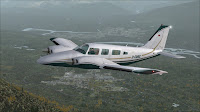Aviation is a big part of this modern world we live in, without it we would be still moving around in ships and on horse back.
Aviation started in the late 1800's with experimental small light aircraft, then in the early 1900's more advanced and faster aircraft was designed and manufactured, with the first world war fighter planes was first developed.
As soon as aircraft was getting bigger and faster, covering longer distances it was made into a business transporting people and cargo around the different Provence's and states in our country's.
Aviation was born and bigger, more efficient, faster planes was designed and manufactured that covered longer distances that eventually lead to planes been able to fly to other country's and across oceans.
From radial piston engines, to twins (piston & turbo-prop), then the multi engined turbo-prop planes carrying more passengers and cargo faster and more reliable flights to link the world into a network.
The Jet age was born to replace the slower turbo-prop, now a trip across the Atlantic was approx 6 hours, the world soon became a smaller place and travel to places we have never been before.
Some people like myself like the older smaller planes (classics) that required more skill to fly and proper use of the gauges in the cockpit.
 | |
| De Havilland Twin Otter (twin turbo-prop) |
From tarmac, to grass, snow, water, dirt, makes a bush pilot more skilled and interesting work (if you can call that work) as you usually get to fly in and around the mountains & lakes.
 | |
| Boeing 727 (Commercial aircraft) |
Commercial aircraft was developed to transport as many passengers as possible, at competitive prices using hubs to link the large airports together via large aircraft, then the smaller / shorter flights used smaller jet or turbo-prop aircraft to get the passengers to there locations.
 | |
| Douglas DC3 (Classic aircraft) |
Douglas DC series is a classic tail-dragger old school plane designed for cargo & passengers, has twin radial engines.
 | |
| Golden Eagle |
General aviation
(GA aircraft) is designed to fly a small group of people or an
individual person around using smaller, lighter aircraft via smaller airports,
airfields or airstrips.
 | |
| Piper Arrow (GA aircraft) |
The planes vary from single high wing Cessna 172, Piper Seneca twin, to twin turbo-prop and small jet planes.
Cessna, Piper, beechcraft & De Havilland are the most common GA plane manufactures.
Military aviation is made up of fast and agile fighter planes, large long haul cargo planes, helicopters & spy planes.
 | ||
| Cessna Caravan (GA - single turbo-prop) |
Some parts of the world depend on special aircraft for delivery of goods, mail and supplies.
Remote places like Northern Canada will use an airplane such as the Cessna Caravan cargo plane that's fitted with a single high performance turbo-prop engine to get the delivery done fast and reliable.
Such a plane can land on small airfields and airstrips.
Remote places like Northern Canada will use an airplane such as the Cessna Caravan cargo plane that's fitted with a single high performance turbo-prop engine to get the delivery done fast and reliable.
Such a plane can land on small airfields and airstrips.
Here is a video of a Golden Eagle in flight, enjoy...
BM1-14 Golden Eagle from CTL Films on Vimeo.
To go to my main college project aviation website please click here www.likeaneagle.ca/collegeproject/shop
